Chewy noodles served with an irresistible pork sauce and crunchy vegetable toppings, Zha Jiang Mian is a signature Beijing dish that’s perfect for weekday dinners.
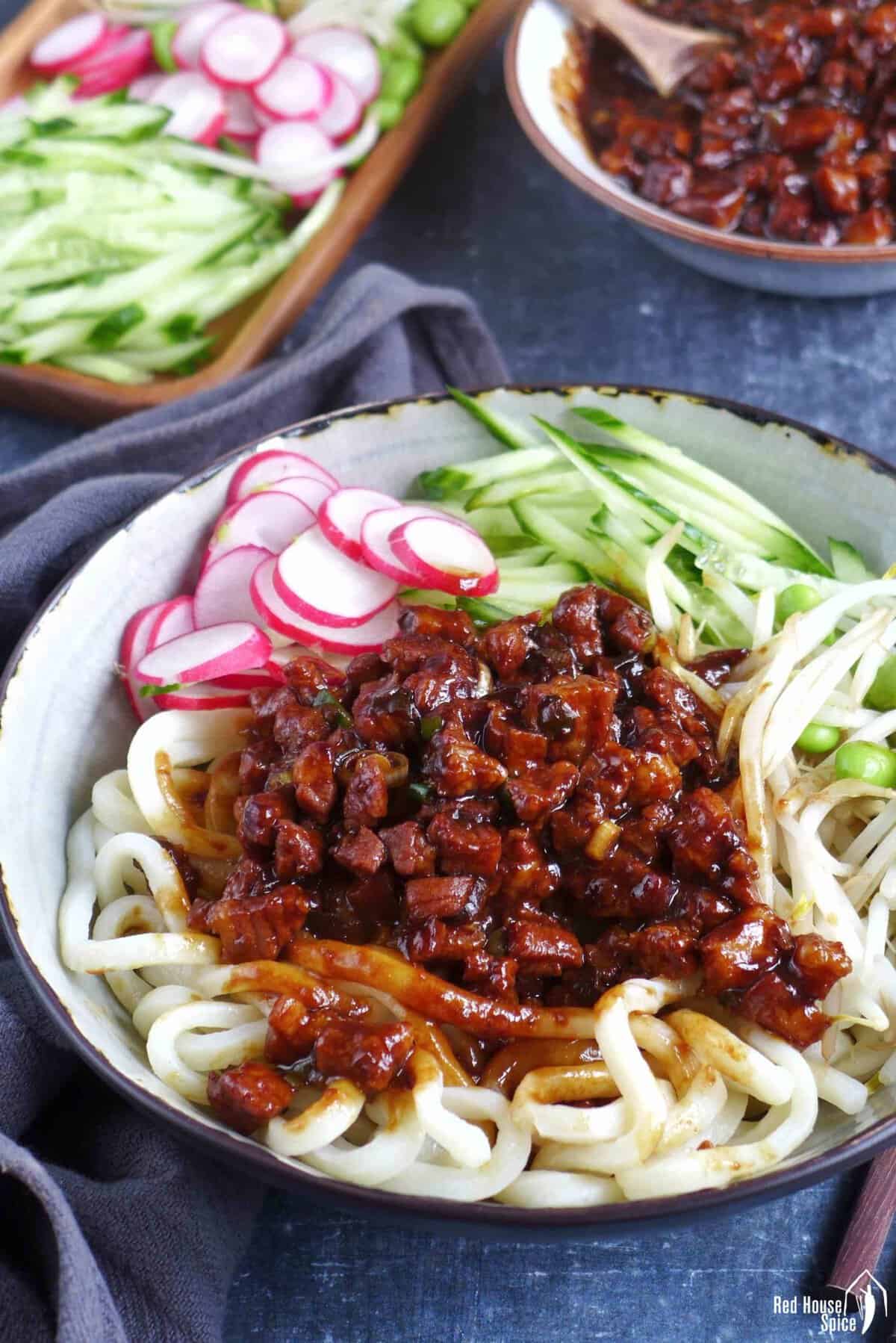
Note: This recipe was originally published in May 2017. This revised version includes minor recipe alteration, process photos, and a video tutorial.
Jump to:
What is Zha Jiang Mian
I worked in Beijing for quite a few years before living abroad, and I consider it as my second home. In this mega-city, with amazing food from every corner of China on offer, traditional Beijing cuisine is always treasured by locals and migrants alike. Apart from the famous Peking duck, I adore its signature dish, Zhá Jiàng Miàn/炸酱面, the noodle dish I cook the most often for my family.
The literal meaning of Zhá Jiàng Miàn is “fried sauce noodles”. It consists of three components: pork cubes braised in a savory, aromatic sauce; thick noodles; and a variety of crunchy vegetables.

Like many iconic Chinese noodle dishes, such as Dan Dan Noodles, Chongqing Noodles, and Beef Chow Fun, it makes a wonderful weekday dinner. What I love about this iconic dish is its flexibility:
- The meat sauce can be made in big batches for later use, making it so convenient!
- You’re free to improvise with whatever noodles and vegetables you have on hand.
Ingredients & substitutes
Meat options
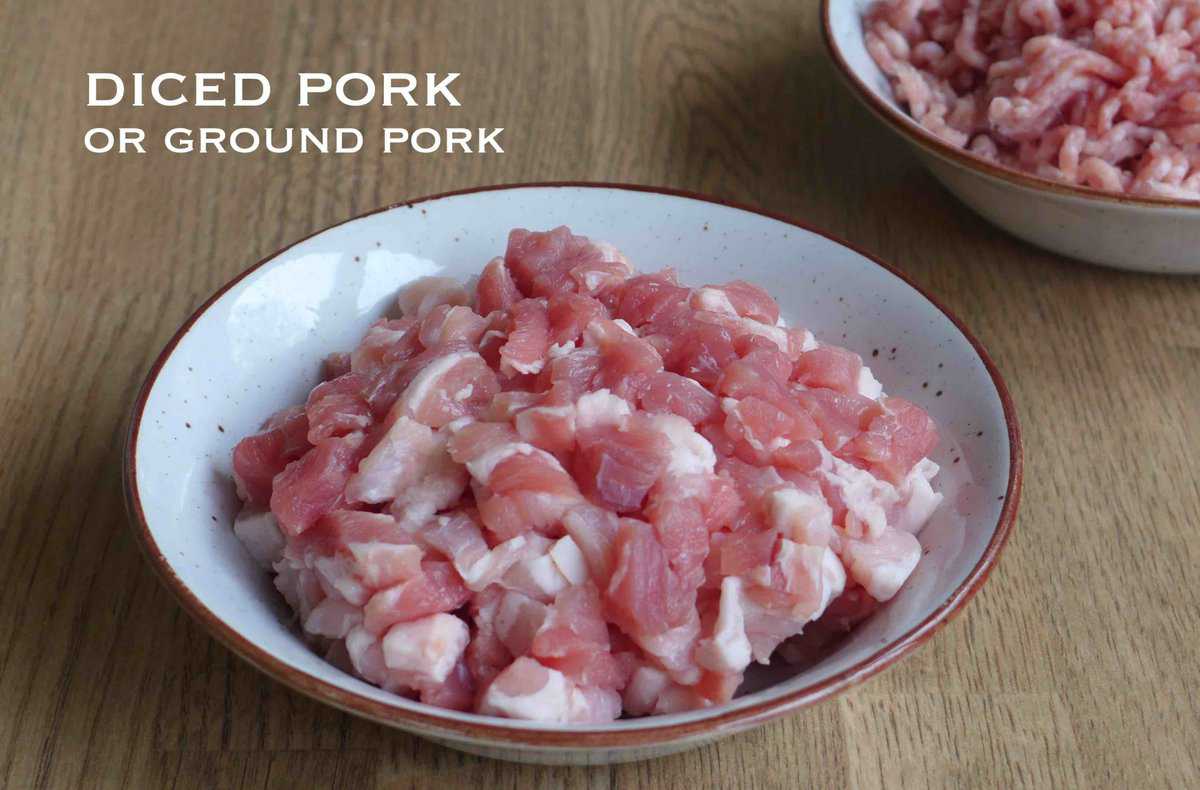
For an authentic taste, I suggest you choose pork belly or other cuts that have a high-fat content. Cut it into small cubes for quick cooking and a nice bite.
- Use ground pork to substitute if you wish to save time on chopping.
- Want to use other meat? Replace pork with beef, chicken, or lamb.
- To make it vegan, use dried tofu (豆腐干) or shiitake mushrooms instead.
Condiments & aromatics
These are the ingredients that lend flavor to the meat sauce:
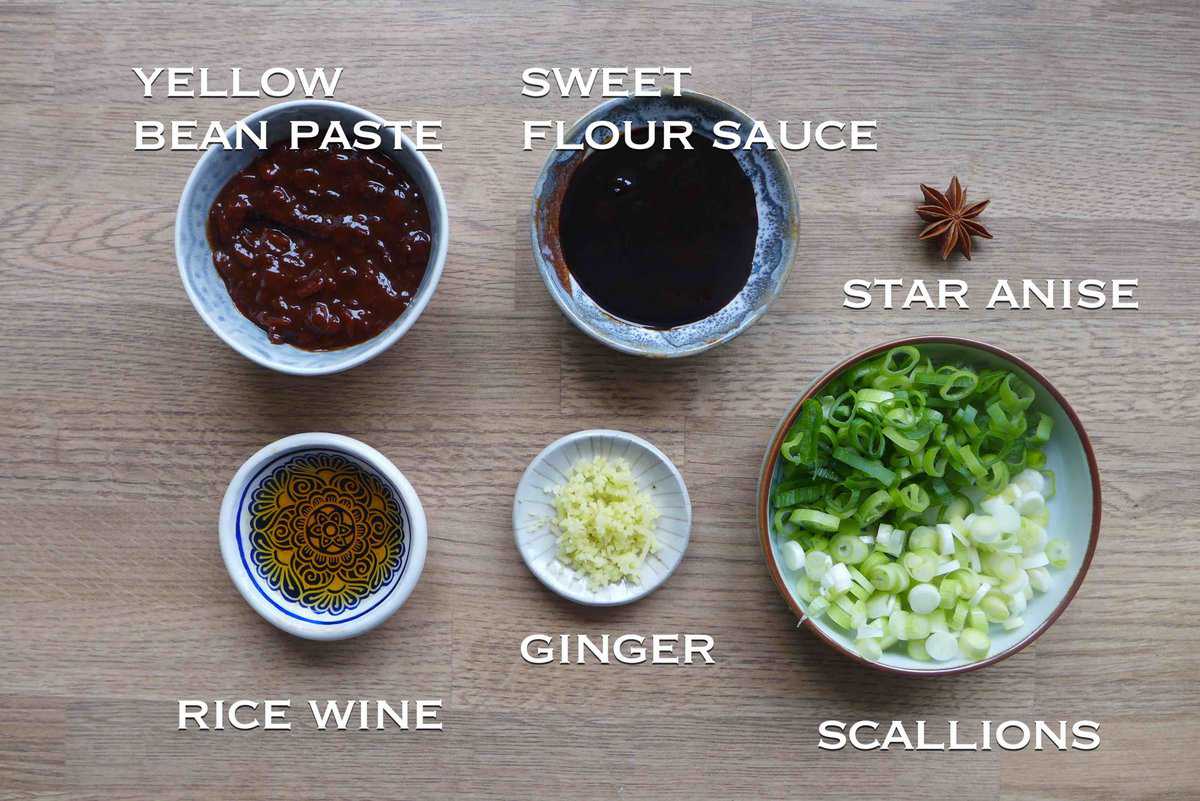
- Yellow bean paste
- Sweet flour sauce
- Shaoxing rice wine
- Star anise
- Scallions
- Ginger
About yellow bean paste
Yellow bean paste (Huáng Dòu Jiàng/黄豆酱), a popular condiment in northern Chinese cuisine, is a dark brown, thick, slightly lumpy sauce made of fermented soybeans, wheat, salt and water. The variation of its names include 黄酱, 大豆酱, 干黄酱 (the extra-dry version) in Chinese and yellow soybean paste, soybean sauce in English.
🌟 To substitute, I often use Sichuan chili bean paste (aka doubanjiang) for an extra hot taste.
About sweet flour sauce
Sweet flour sauce (Tián Miàn Jiàng/甜面酱) is made of fermented wheat flour and it has a darker, runnier, and smoother texture than yellow bean paste. As its name suggests, it has a noticeable sweet taste which nicely balances the saltiness.
🌟 To substitute, you may use hoisin sauce. Alternatively, use yellow bean paste solely and add a little sugar.
Noodle choices
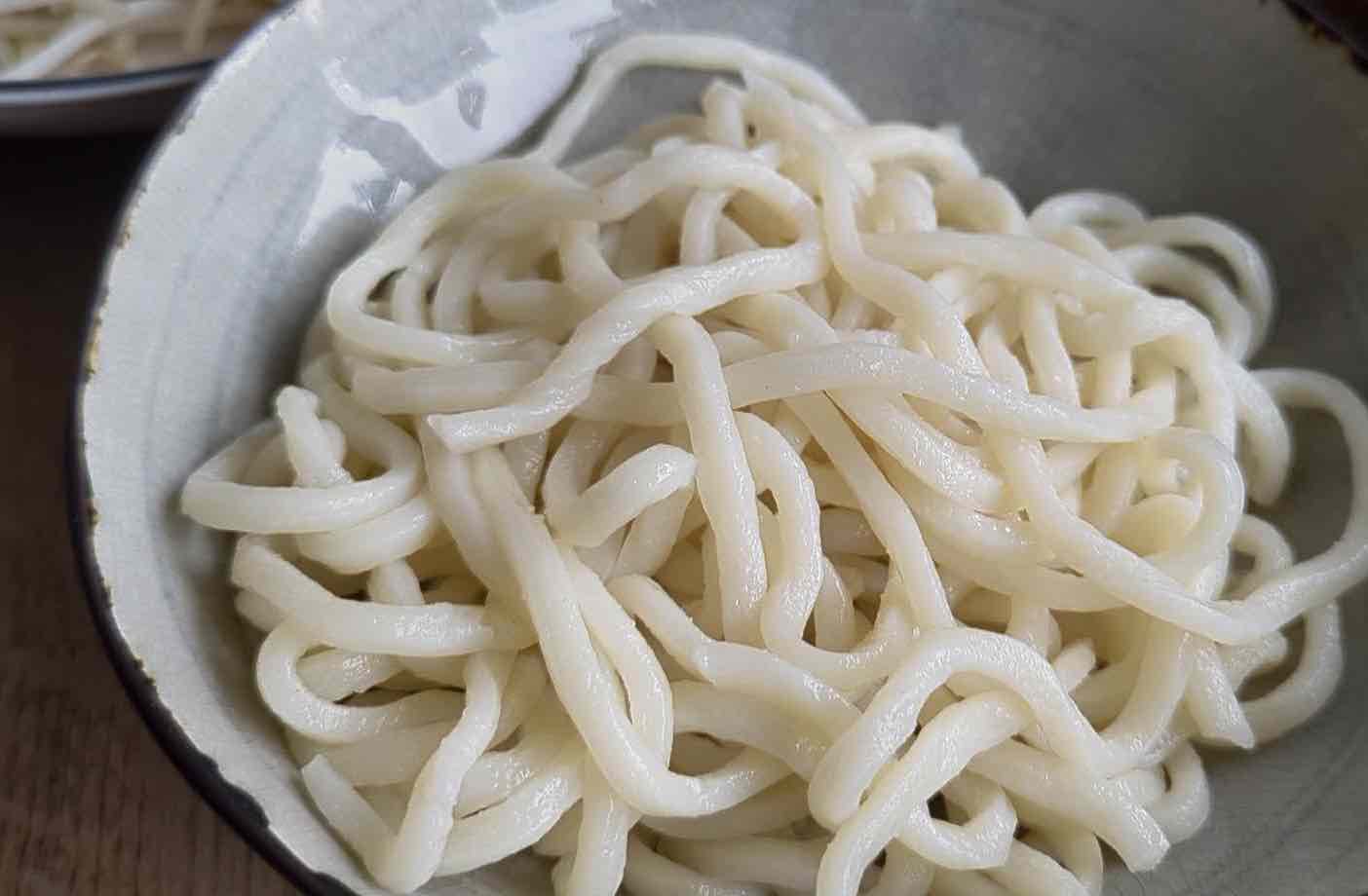
Traditionally, Beijing cooks use hand-cut noodles (手擀面) for Zha Jiang Mian. A piece of firm dough (made of flour, water, and a little salt) is rolled flat with a rolling pin and then cut into long, thick noodles.
Other types of noodles work well too:
- Shop-bought dried noodles are a time-saving alternative.
- Hand-pulled noodles are the type I use the most often as they have a similar texture to hand-cut noodles.
- Fresh ramen noodles made with a pasta machine are also a great option.
Veggie toppings
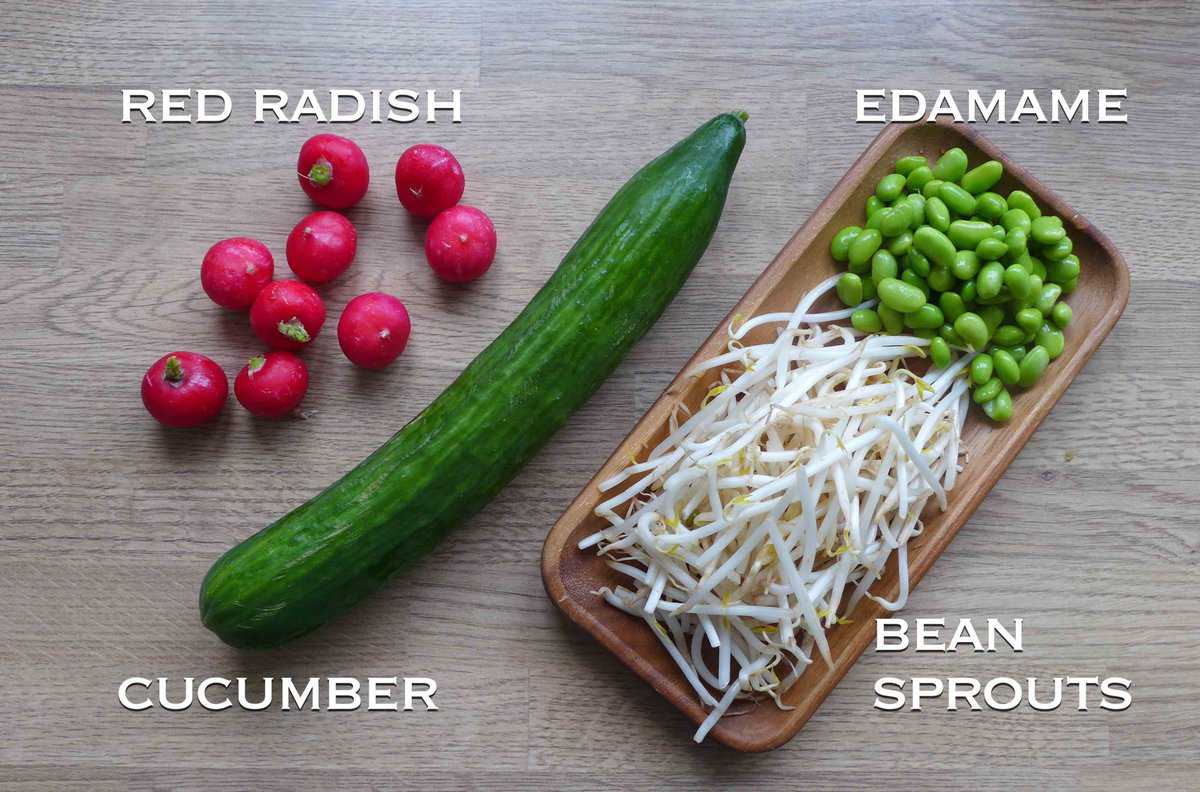
Vegetables play an important role in Zha Jiang Mian. They are used either raw or quickly blanched, preserving most of their nutrition. The natural taste of vegetables goes very well with the salty sauce, giving this dish an excellent balance.
As shown in the pictures, I chose to use cucumber, beansprouts, red radishes, and edamame (aka fresh soybeans). Many other vegetables work well too, such as Napa cabbage, carrot, celery, kohlrabi, etc.
Cooking procedure
Step 1: Cook the sauce
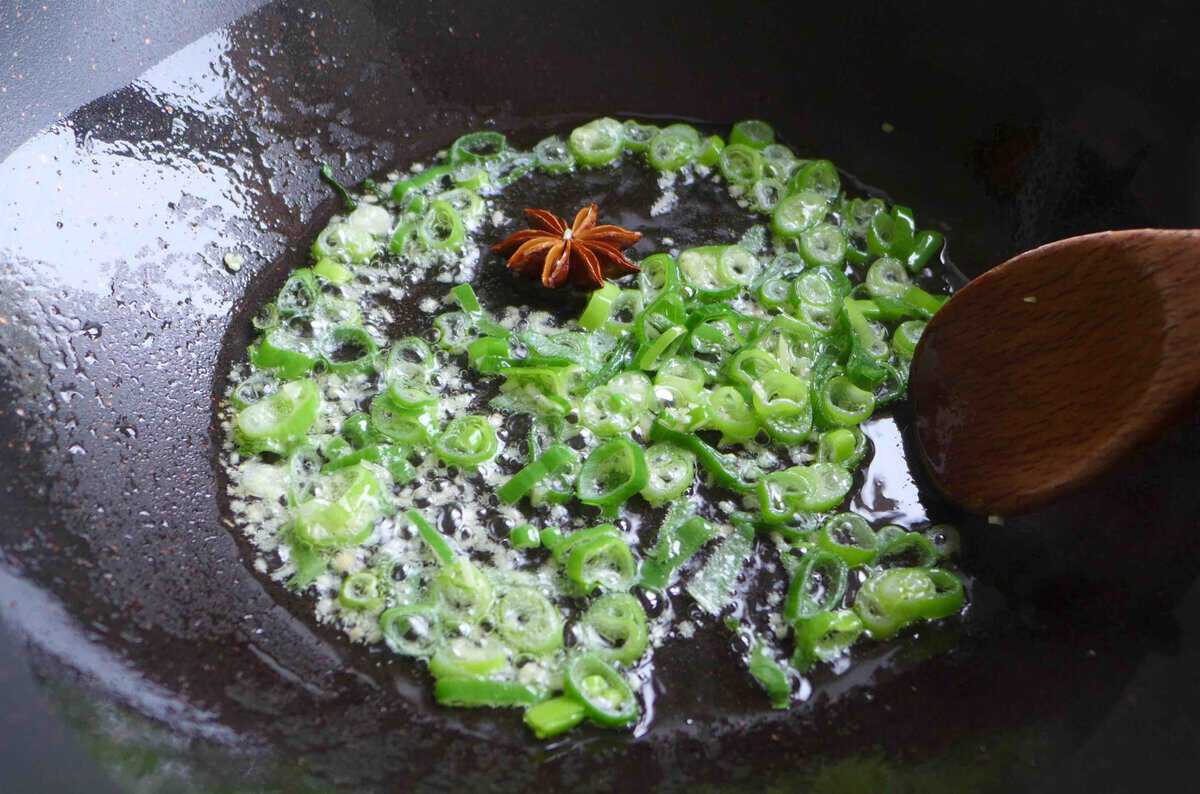
Heat a little cooking oil in a wok or a large skillet. Sizzle the green part of the scallions, minced ginger, and star anise until fragrant.
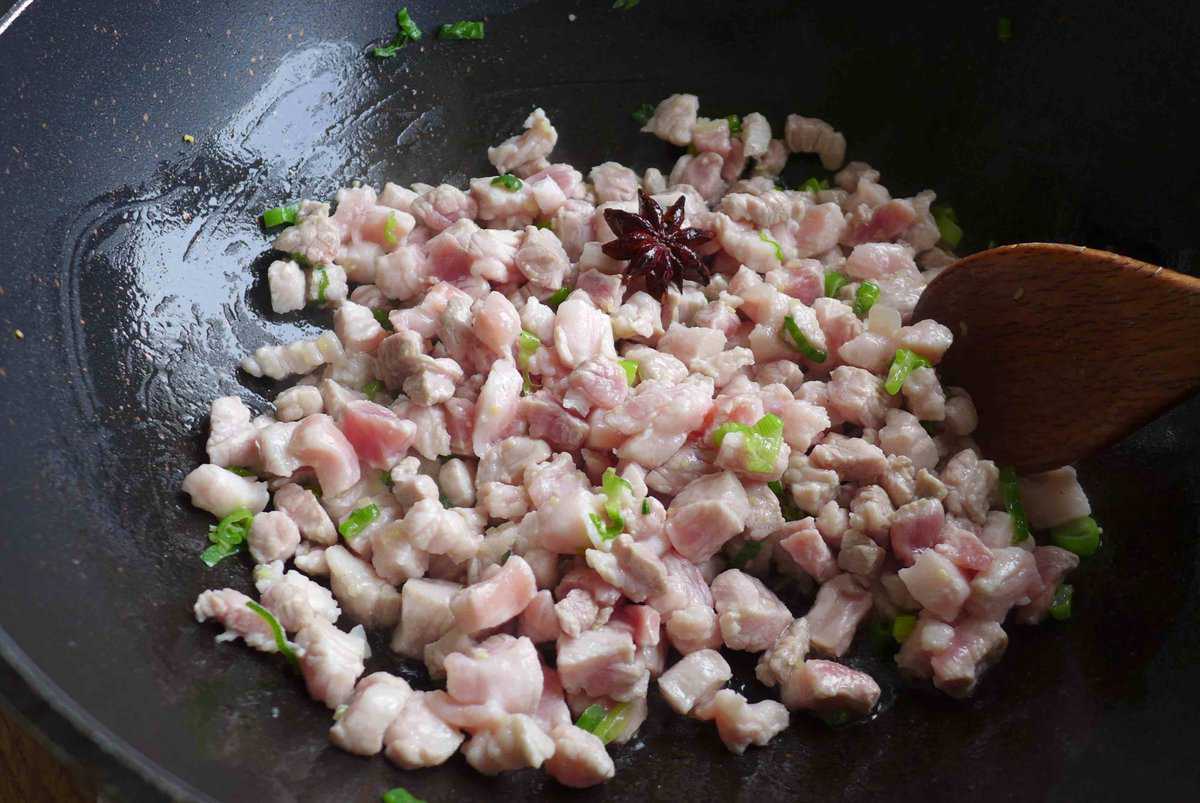
Stir in the pork cubes and fry until they lose their pink color (If using ground meat, use a spatula to loosen any lumps).
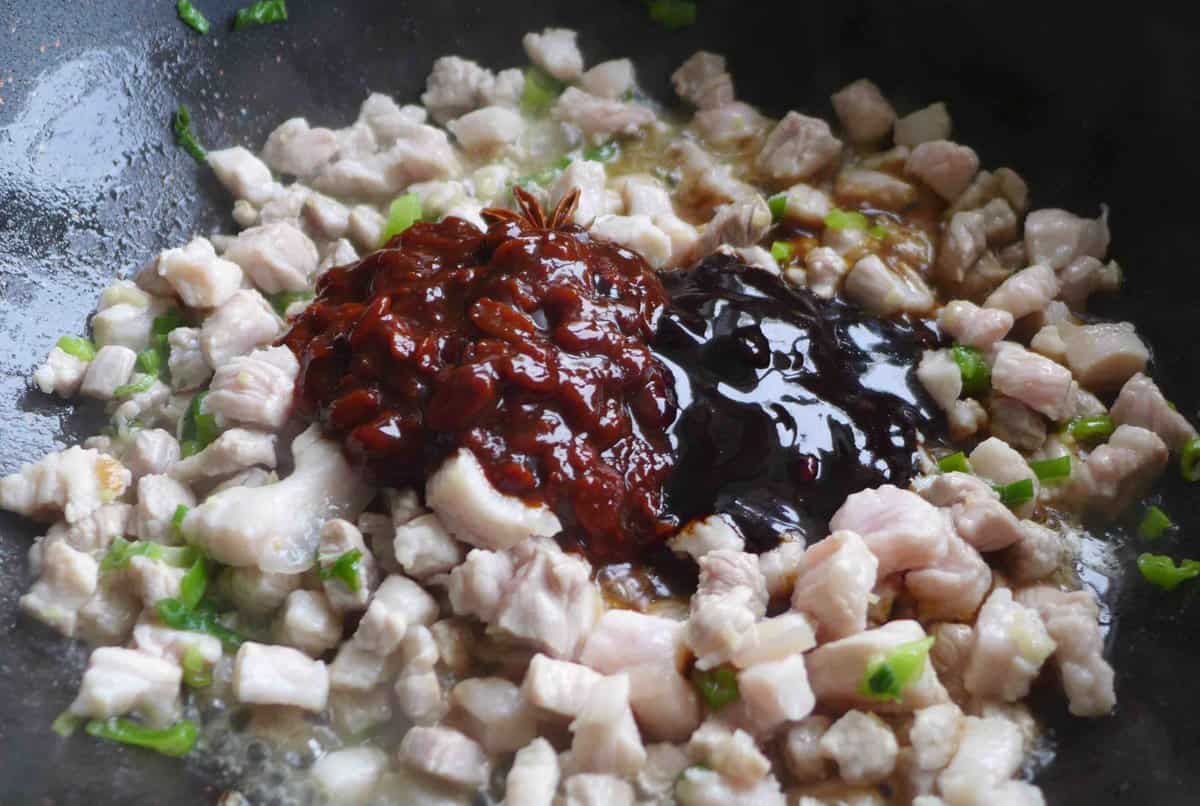
Pour in Shaoxing rice wine, then add yellow bean paste and sweet flour sauce.
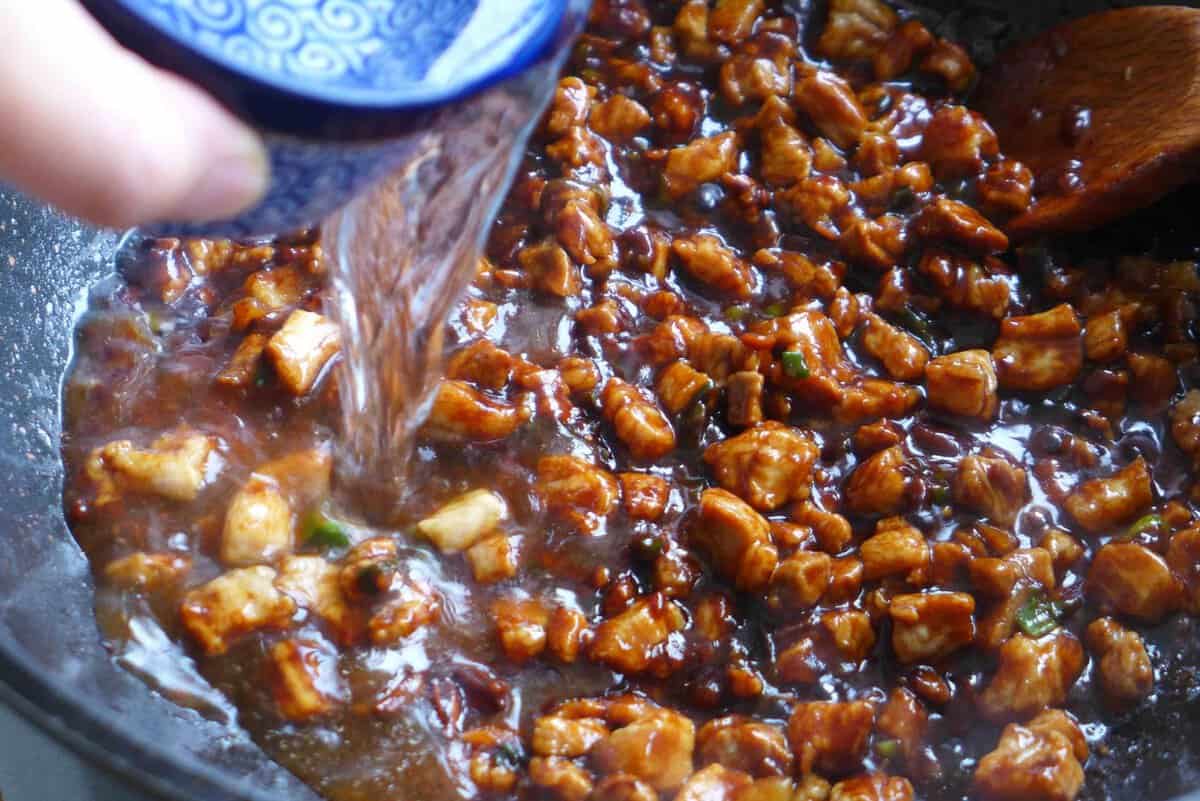
Toss well and top with a little water.
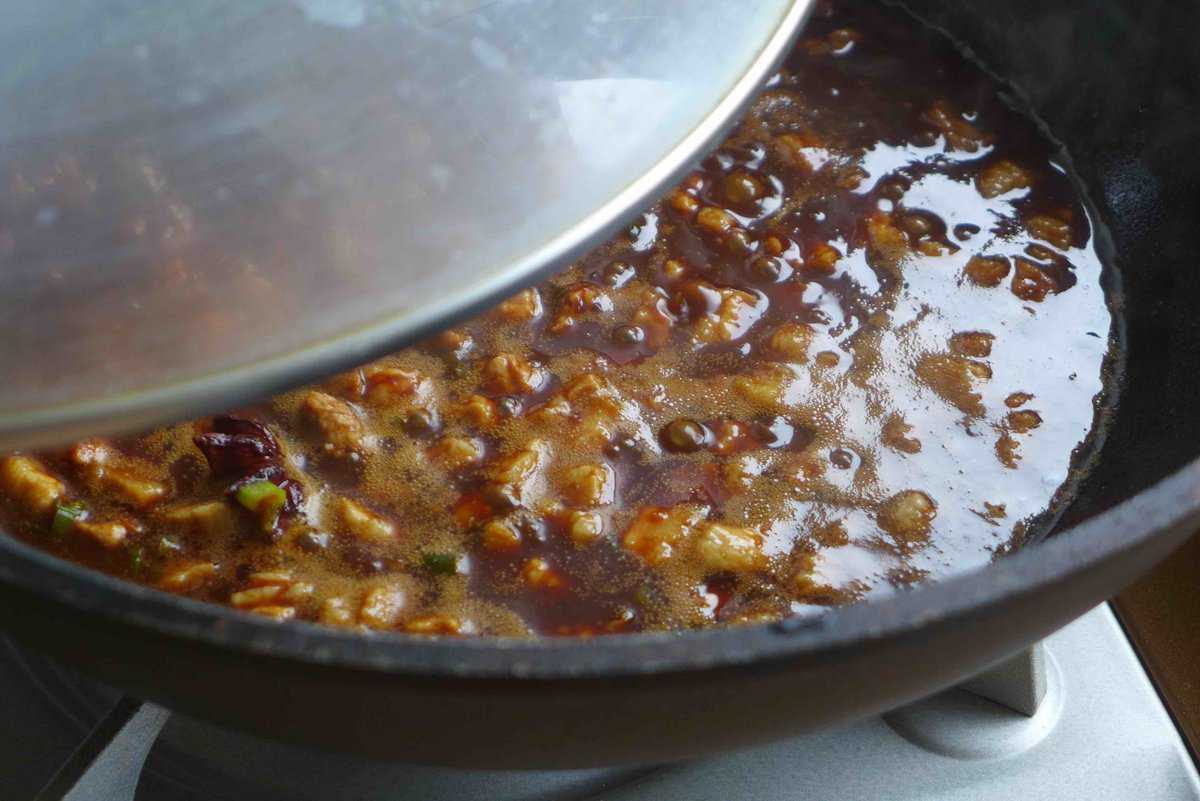
Once the sauce comes to a gentle boil, cover with a lid and leave to simmer over low heat for 20 minutes (or 15 minutes if using ground meat).
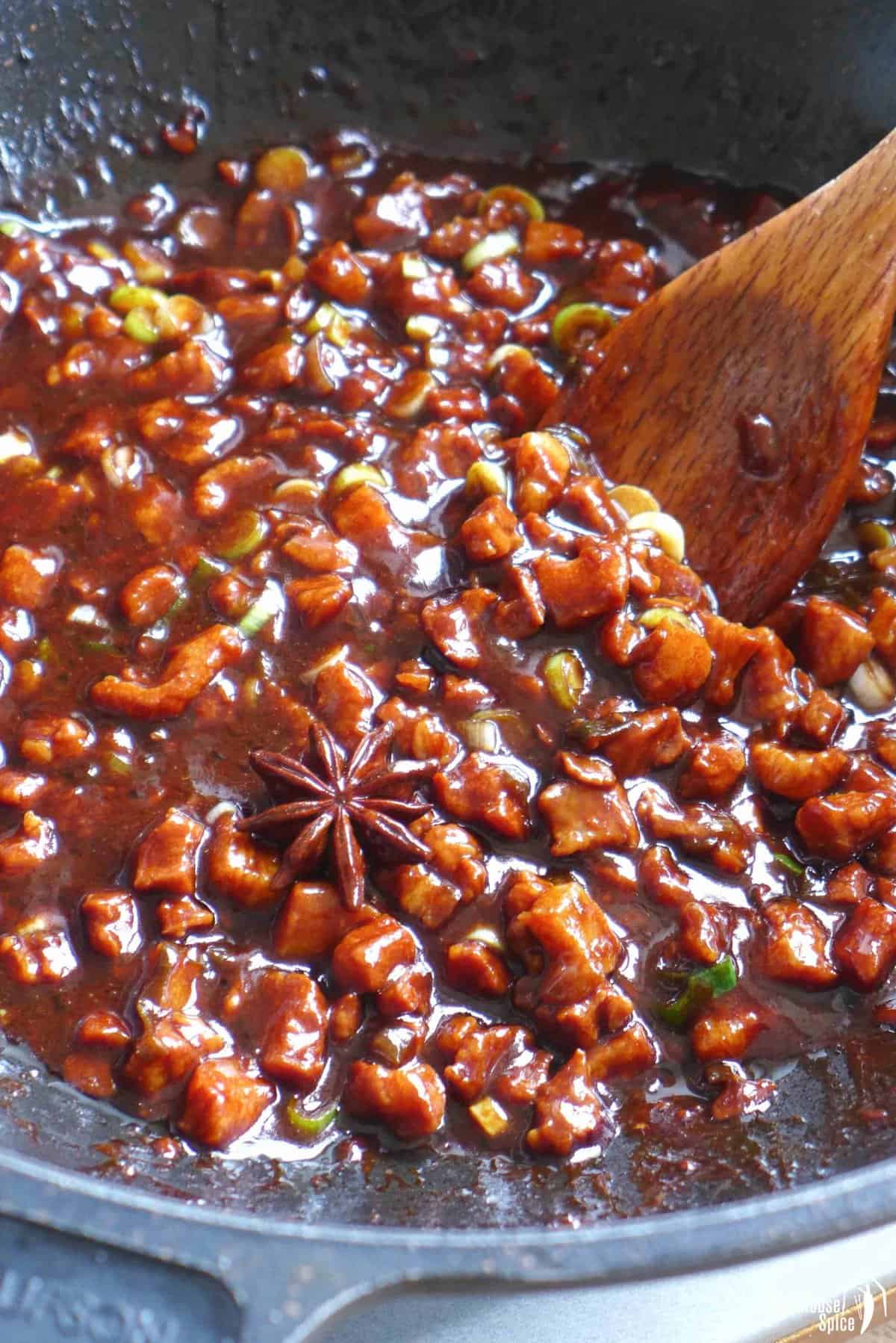
Uncover and turn up the heat. Let the sauce boil briefly to thicken the consistency. Then stir in the remaining scallions to finish.
Step 2: Prepare the vegetables
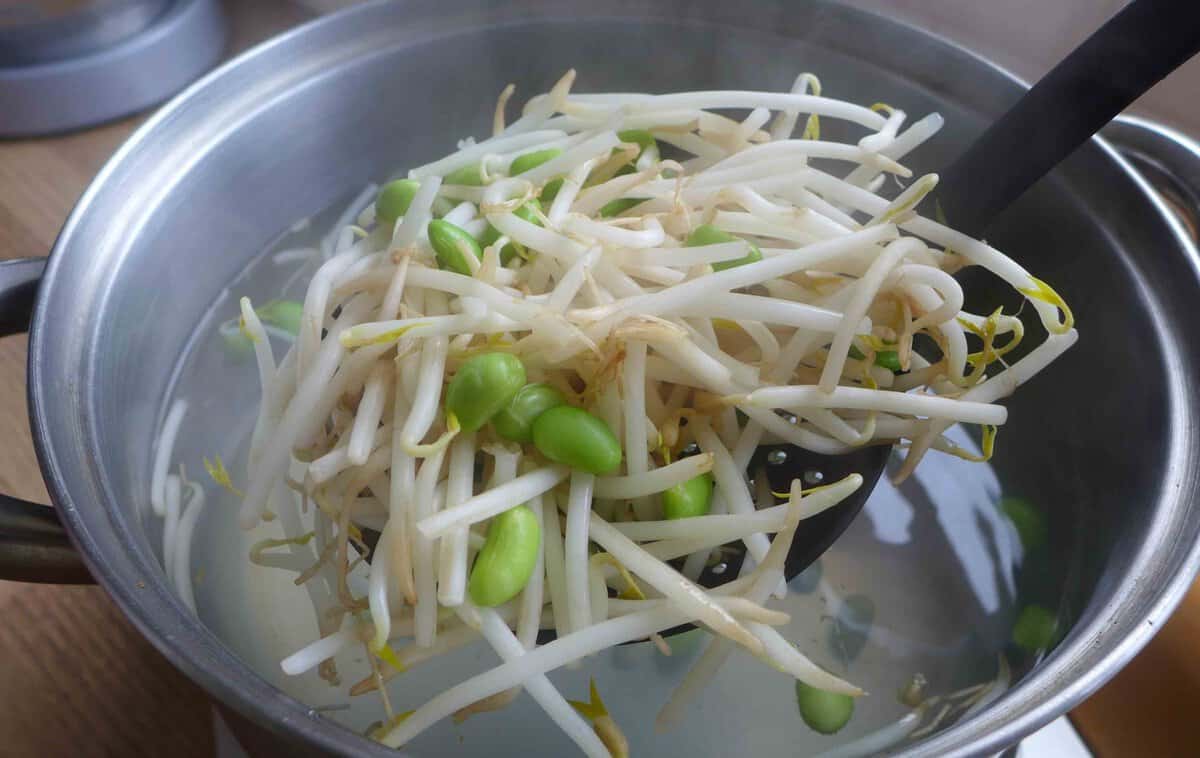
First, blanch edamame beans in boiling water for about 1 minute if chilled, or 2 minutes if frozen. Then, add bean sprouts and blanch them for no longer than 20 seconds to remove their rawness but retain the crunchy texture.
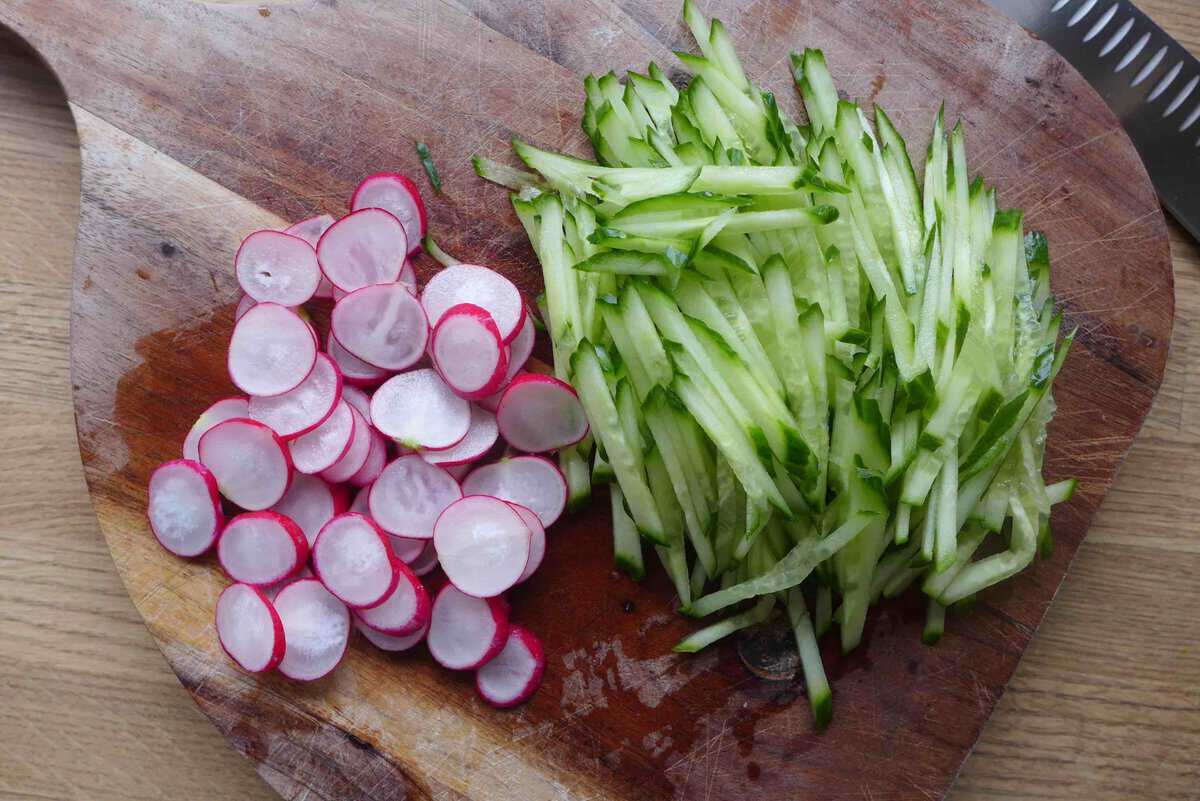
Cut the cucumber into matchsticks and thinly slice the red radishes.
Step 3: Boil the noodles
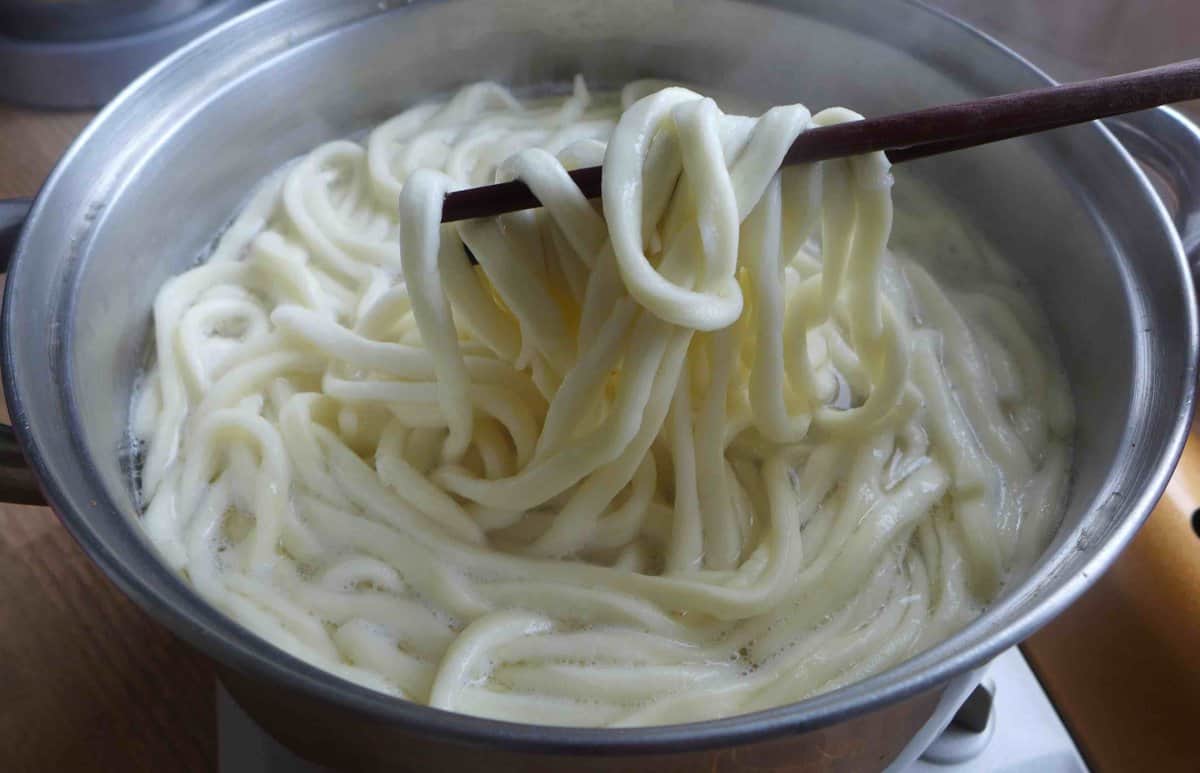
Use the same water in which the vegetables are blanched. Add more if necessary and bring it to a full boil over high heat. Put in the noodles. Once it comes back to a boil, reduce the heat to medium-low (be attentive to avoid boiling over).
Simmer until the noodles are just cooked. The time required depends on the noodle type. Taste a strand if unsure.
Optional step: Rinse the cooked noodles for a few seconds under running water. This is to remove any surface starch and achieve a silky mouthfeel.
Step 4: Assemble the dish

Once you’ve got all the elements ready, simply assemble them in serving bowls. Alternatives, only add the noodles to each bowl and let the diners decide how much the meat sauce and which veggie toppings to use.
Don’t forget to give everything a thorough toss before tucking in!
Make-ahead
As I mentioned earlier, I make Zha Jiang Mian regularly. But I don’t cook the saucy meat topping every time. Usually, I make it in a big batch and freeze any leftovers for later. Here are my make-ahead tips:
- Increase the ingredient quantity proportionally and follow the same procedure to make the sauce.
- Once completely cool, divide the sauce into small portions and refrigerate for 1 week or freeze for 3 months.
- Defrost in the fridge then reheat before serving.
Other popular noodles
Want to learn more authentic Chinese noodle dishes? Here are more to try:
📋 Recipe card
Love this recipe? Please leave a 🌟🌟🌟🌟🌟 rating and a comment. Thank you!
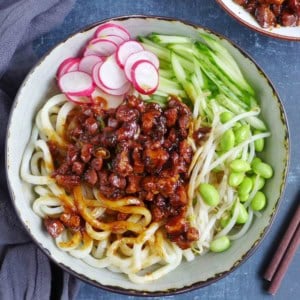
Zha Jiang Mian (炸酱面)
Ingredients
For the pork:
- 10 oz pork belly - or ground pork (see note 1)
- 2 tablespoon neutral cooking oil
- 3 stalk scallions - chopped and divided
- 1 teaspoon minced ginger
- 1 piece star anise
- 1 tablespoon Shaoxing rice wine
- 4 tablespoon yellow bean paste - see note 2 & 3
- 2 tablespoon sweet bean sauce - see note 4
- ⅔ cup water
For the vegetables
- 1 large cucumber
- 8 red radish
- ½ cup edamame - aka fresh soybeans
- 2 cup bean sprouts
For the noodles
- 4 portion noodles - fresh or dried (see note 5)
Instructions
Cook the pork
- Cut pork belly into small cubes (about ⅓ inch/1 cm). Keep its skin on if any.
- Heat oil in a wok (or a skillet) over medium heat. Add the green part of the scallions, ginger, and star anise. Leave to sizzle until fragrant.
- Stir in the pork. Fry until it turns pale. Add Shaoxing rice wine, yellow bean paste, and sweet flour sauce. Mix well then add water.
- Cover with a lid and leave to simmer over low heat for 20 minutes (or 15 minutes if using ground meat).
- Turn the heat up to high and leave to cook uncovered until the sauce thickens further. Stir in the remaining scallions and set aside.
Prepare the vegetables
- While waiting for the pork to cook, prepare the vegetable toppings. Cut the cucumber into matchsticks, and thinly slice the red radish.
- Blanch edamame in boiling water for 1 minute if chilled, or 2 minutes if frozen. Add beansprouts and continue blanching for about 20 seconds. Fish out the edamame and sprouts.
Boil the noodles
- Add noodles to the same pot of boiling water (top up with more if necessary), and boil until fully cooked. Drain then rinse under cold water for a few seconds to remove surface starch (skip rinsing if your tap water isn’t portable).
Assemble the dish
- Place the noodles in four serving bowls. Add the pork sauce and all the vegetable toppings. Stir well before tucking in.
Video
NOTES
NUTRITION
NUTRITION DISCLOSURE: Nutritional information on this website is provided as a courtesy to readers. It should be considered estimates. Please use your own brand nutritional values or your preferred nutrition calculator to double check against our estimates.


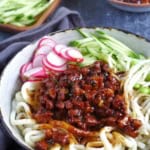
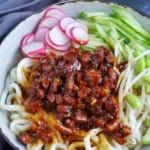
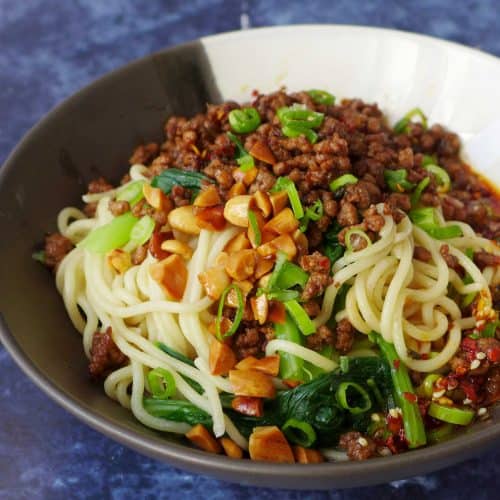
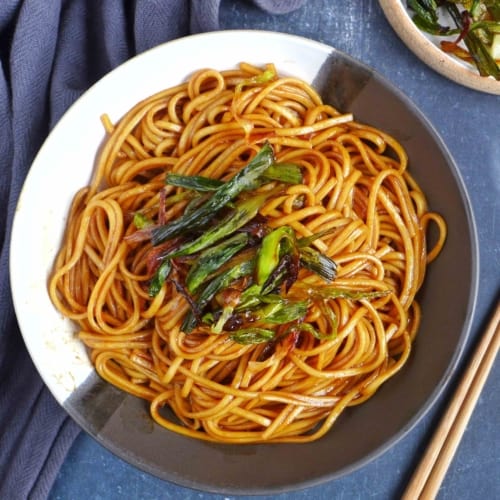
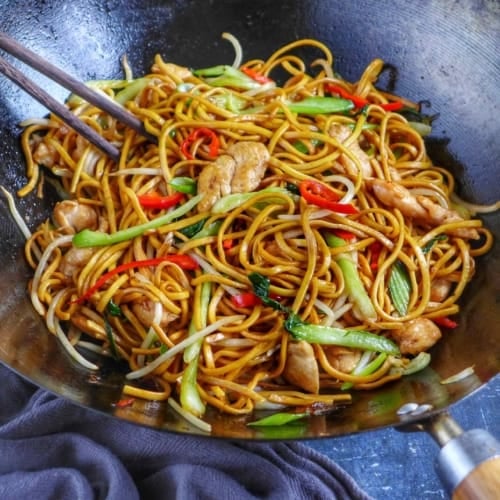
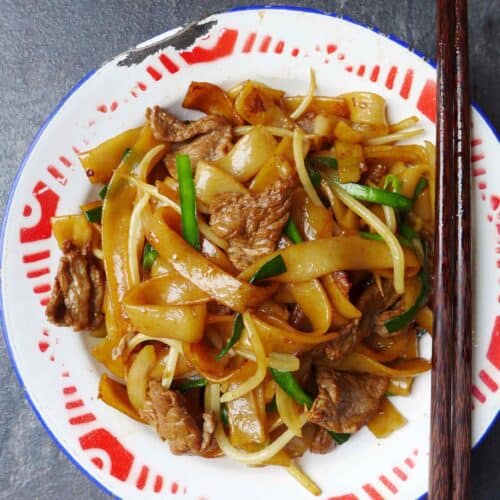

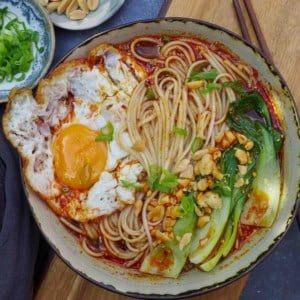
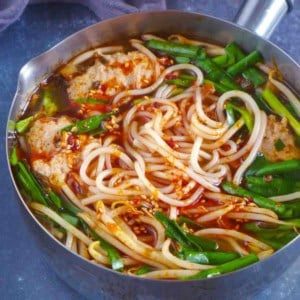
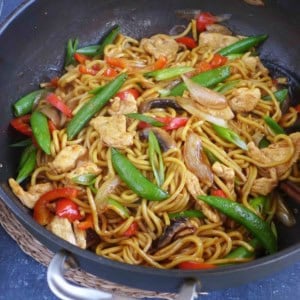
I’ve had them homemade a good amount of times, can’t wait to get all the ingredients and get back that Beijing-feeling ☺️
That’s great! Happy cooking!
Yesss I found all the bean paste and bean sauce as required for the dish. It’s absolutely delicious. 1 aspect throughout. I followed the recipe very strictly, I didnt achieve the lovely dark brown colour of the meat and thickness of the sauce as pictured above. The colour of the sauce right after diluting is very similar to yours . The end result is different. Would you have any suggestions?
Hi Paul! As the power of cookers varies, you might need to increase the cooking time. This way you will be able to reduce the water content in the sauce thus achieve a dark colour and a thicker texture. Hope this helps.
Awesome! Thank you! Have been making this for years, but since I live in Taiwan, some ingredients are not readily available. Have had to substitute. Making the noodles from scratch is also worth it, and easy if you have a simple noodle maker. I always look for a good place when in Beijing. Do you like Douzhi? I always look for 豆汁店 when I visit, as well. So many delicious things in those places. I like 錦馨 north of 天壇。老磁器口, close by is famous, but I don’t think it’s as good. Their douzhi is a little weird. I think they put in starch to thicken it. Not as sour.
Hi Vihren! Sounds like you know a lot about Beijing specialities. To be honest, I haven’t acquired a taste for Douzhi 豆汁 even if I have previously worked in Beijing for almost a decade. Maybe I should give it another try on my next trip to China.
Is it possible to use the Lee Kum Kee black bean garlic sauce for this recipe? or is the paste needed?
Hi! You can use Lee Kum Kee black bean garlic sauce for sure. It will be tasty but it can’t be called Beijing Zha Jiang Mian 🙂 Please be aware that it might have a different salt content. So adjust the amount accordingly. Happy cooking!
Any chance of the recipe and technique for the hand pulled noodles? : D
Thank you for reminding me! I will share it for sure.
Yummy dish… Thanks for sharing!
You are welcome Jing!
Delicious! Originally wanted to leave one portion for tomorrow to take to work, … yum yum… it stood no chance! I discovered this blog just recently and I can without any hesitation state that unlike myriad of other sites the recipes here turned out what it meant to be. Truly authentic dish that I enjoyed during my stay in Beijing. My pregnant wife cannot stop eating what I cooked based on your recipes.
Hi Vlad! Thank you so much for your kind words! Very happy to know that my recipes brought you back nice memories of Beijing. I just came back from my Culinary Tour of China and my tour members really loved Zha Jiang Mian. Happy cooking!
I have just returned to NZ from China so am looking forward to trying some recipes to recreate the flavours I so enjoyed – thank you
You are welcome Erin! I’ve just come back to China for my Culinary Tour of China and look forward to getting more inspirations for my blog.
Those noodles look so great! Thank you for sharing this recipe and its origins, I’ll be giving it a try for sure.
My pleasure!! Hope it will turn out great for you. Have a lovely day!
Wei, This look so good… Another great post! One of my kiddos loves to put hoisin sauce on everything, so he would like this recipe!! 🙂
Thanks Heddi. I’m sure you all will love it. Soon Chinese food will be dominant on your dinning table, haha! Have a great week! X
Yeah it’s such a good recipe
Thank you and happy cooking!